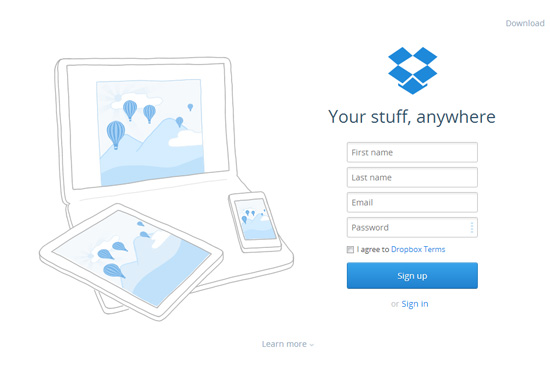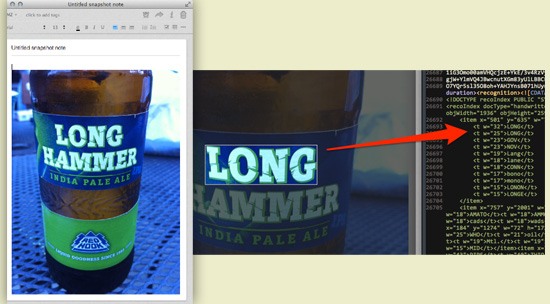When we pay for software, it’s usually because it solves a critical problem we have. It satisfies a need. It provides a certain value we’re willing to pay for.
And if we can derive value from a product or a service at no upfront cost, then we are more likely to pay later on in order to continue deriving that value.
Internet entrepreneurs need a business model that supports this notion.
The Problem with Existing Business Models
There seems to be three popular business models for an Internet software as a service (SaaS) company:
- Freemium: Have a free subscription plan and paid subscription plans that have more features than the free plan
- Free trial: Have a free trial period and then charge customers after the period is over
- Paywall: In order to use the service, a user will have to pay first
Issues with Freemium
The freemium model is full of flaws. Paul Sawers, an editor at Internet technology news site The Next Web, explains why freemium doesn’t work:
"People are simply too accustomed to consuming content for free, and many businesses will find it tricky converting users from the free version of a service to the paid one. Even in the more successful cases, the non-paying users will typically always outnumber the paying users, the upshot of this being a company is dedicating time, money and resources to supporting users that have absolutely no intention of coughing up cash."
Mark Evans, a consultant to startups, says this about the freemium business model:
"The problem is freemium doesn’t work for the vast majority of companies, especially ones focused on the consumer market. In theory, it sounds good but in practice few people actually pay for more features. Sure, there are exceptions to the rule but those are few and far between."
"Freemium is flawed because most people don’t need more features than what they can use for free."
Issues with Free Trials
Right now, the typical paid app will offer a trial so that users can try before they buy. The trial period is usually time-based: 7 days, 14 days, 30 days.
The problem with this approach is that this time-based limit is not user-centered. App developers opt for it because they want to generate revenue as quickly as possible.
But how do you know that the user has received any or enough value from the product in that period? Usually, you don’t.
What happens when the user hasn’t had enough time to receive enough value? They won’t become paid users.
Issues with Paywalls
Internet users are generally unwilling to pay for a service without being able to try it first. This is the reason why the freemium and "free trial" business models above became common.
And if you’re in a competitive space, chances are good that your competition is offering some form of free access to their product, which reduces the likelihood of potential users trying yours when they see their other free options.
What Should We Do Instead?
Our best bet is to use a business model that converts non-paying users to paying customers at the right time. That time is when they have already received significant value from our product.
The premise is this: Users will want to pay for the product because they have the desire to continue receiving the value they’re getting.
Value Activation Metrics
We can activate the payment once the user has derived significant value from our product.
We can ask users to pay at the point when the product has solved a specific problem that they would like to keep solving. We can pick certain "value activation" metrics to determine what point we should ask users to start paying.
I define the term value activation metric as a quantifiable measurement that is specific to an app. It’s a signal that tells us the user is now getting significant value from the product and that he/she is now likely willing to start paying for it.
Examples of value activation metrics include:
- Number of sales leads the user gets
- Number of royalty-free stock photos downloaded
- Number of invoices sent to the user’s paying clients
- Amount of site traffic the user has gotten from your services
- Amount of disk storage used

Dave Gooden, founder of LakePlace (a site that enables people to rent out their lakefront property) explains the approach he took with his users:
"We noticed our visitors asking our listing agents if any of their listings were available for rent. After the 100th (or 500th) request, we decided to open up a vacation rental marketplace. Using what we learned the first time around, we got back on the phones and offered resort owners and vacation rental managers free trials. We went as far as inputting all of their information, uploading their pictures, etc… whatever it took to get them to try LakePlace.com. Once they received 10-20 inquiries, we let them know that the free trial was over and it was time to become a paying customer. I think we had a 99% retention rate when converting free trial users to paying customers. Today, LakePlace.com’s Minnesota vacation rental section is about the same size as Homeaway & VRBO…and waay bigger than AirBnB’s…and we are a very close 2nd in Wisconsin (I hope to fix that this year)."
In this scenario, the value activation metric is the number of inquiries. Once resort owners and vacation rental managers received 10-20 inquiries worth of value, to continue to receive the value of the service, they needed to pay.
Gooden knew that once a user had received a certain amount of inquiries, the user was likely making money from those inquiries and thus had activated the value of his service.
Also note the high conversion rate in Gooden’s account: 99% retention rate, which — even if it might just be a figurative number that he used to convey a significantly high conversion rate — is a statement of his strategy’s efficacy.
A few companies understand this concept of activating the value of a product before charging for their service. Dropbox and Evernote are two.

Dropbox users get peace of mind knowing that they will always have access to their files. The more files someone stores, the more likely they will run out of space, and the more likely they will convert to a paid user.
Once the user has gotten enough value from using Dropbox, they are more likely to pay in order to keep using the service.
Evernote knows that the longer you remain a customer, the more likely you will convert to a paid user. In fact, it has a pretty good idea of when you will do so. The value of Evernote is in enabling users to store and retrieve any memory easily.
So, to store a memory, users simply snap a picture and upload it to Evernote. The software indexes the picture, and users can even search for words in the picture.

It stands to reason, then, that the more users store, the more valuable the service becomes. And at a certain point, the user becomes willing to pay to continue deriving that value from using Evernote.
When building an Internet-based service or product, we should start examining the points in which the user starts getting significant value from it.
How many sales leads does a user need to get, in order for her to want to pay to continue getting those sales leads?
How much data will a person need to store before he sees how important it is to have a cloud backup of his files that’s accessible on all his Internet-enabled devices?
Once you figure out what value activation metrics are appropriate for measuring the value you provide your users, you can use them to signal the point in which you should convert non-paying users to paying customers.
Related Content
About the Author
 Marc Gayle is a Rails developer and founder of 5KMVP, where he builds Minimum Viable Products for just $5K. Follow him on Twitter and check out his personal blog.
Marc Gayle is a Rails developer and founder of 5KMVP, where he builds Minimum Viable Products for just $5K. Follow him on Twitter and check out his personal blog.
The post Value Activation: A Different Business Model for Internet Entrepreneurs appeared first on Six Revisions.

0 comments:
Enregistrer un commentaire